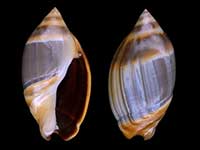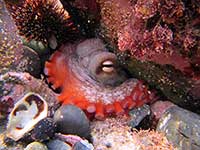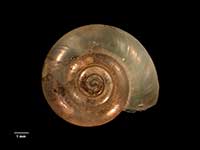Identify commonly encountered species by shape and form.
This section is to help identify some of the more common species, frequently encountered around New Zealand.
Click on the group of images most similar to the specimen that you wish to identify.
Continue choosing the most similar group to narrow down your search.
Mollusca (Marine)Mollusca is a large and varied phylum, which contains snails, slugs, clams, chitons, octopus, squid, nautilus
Mollusca (Land)Land snails and slugs
Mollusca (Freshwater)Freshwater mussels and snails
Key to Geographical Ranges

The symbols K.A.C.F.M.An. are used to indicate the geographical range of the species.
They have been adopted to give an approximation of the range of each species within New Zealand.
K=
Kermadec Islands
A=
Aupourian - Kaipara Harbour, north around North Cape, encompassing the Three Kings Islands and south to East Cape
C=
Cookian - Lower North Island and the northern part of the South Island
F=
Forsterian - Otago, Fiordland and Stewart Island
M=
Moriorian - Chatham Islands, Pitt Island
An=
Antipodean - Subantarctic Islands of New Zealand
Fw =
Freshwater
L =
Land
N =
North Island
S =
South Island
R =
Recent
Sf =
Subfossil
Fo =
Fossil















































